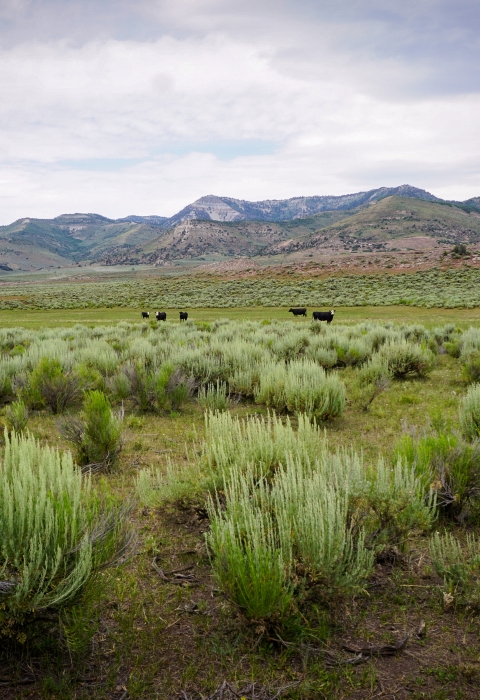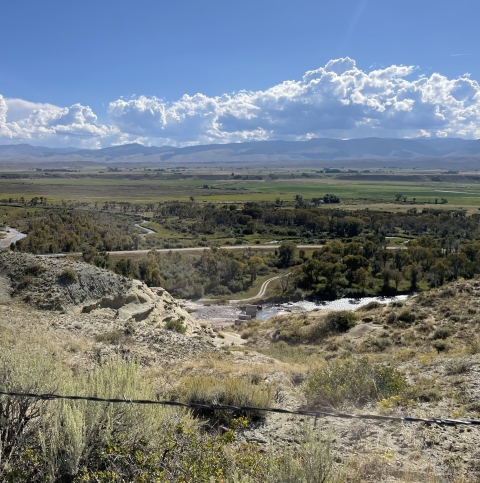LANDER, Wyo. — The U.S. Fish and Wildlife Service today announced more than $10.5 million in fiscal year 2024 funds from President Biden’s Bipartisan Infrastructure Law to support 59 strategic projects in Western states focused on habitat restoration and on-the-ground science.
Through President Biden’s Investing in America agenda, the Department of the Interior is implementing more than $2 billion in investments to restore our nation’s lands and waters and advance the America the Beautifulinitiative to restore and conserve 30% of lands and waters by 2030. To guide these historic investments, the Department released a restoration and resilience framework earlier this year to support coordination across agency restoration and resiliency programs and drive transformational outcomes, including a commitment to defend and grow sagebrush ecosystems. By working collaboratively with farmers and ranchers, state and local leaders, Tribal Nations, the outdoor recreation community, private landowners, and other stakeholders, the Department is working to build ecological resilience in core habitats and make landscape-scale restoration investments across sagebrush country
“These sagebrush projects will combat invasive grasses and wildfire, reduce encroaching conifers, safeguard precious water resources for neighboring communities and wildlife, and promote community and economic sustainability,” said Service Director Martha Williams. “As we continue to work alongside our partners on projects that are conserving the sagebrush ecosystem, we are creating good-paying jobs which bolster local economies, and we are strengthening important relationships between the Service, states and Tribes in these landscapes.”
Spanning over 175 million acres, sagebrush country contains biological, cultural and economic resources of national significance. It is home to more than 350 species across the West, including pronghorn, elk, mule deer and greater sage grouse. America’s sagebrush ecosystem is the largest contiguous ecotype in the United States, comprising one-third of the land mass of the lower 48 states.
Service Deputy Director Siva Sundaresan made today’s announcement at an event at the Wind River Indian Reservation. In fiscal year 2024, over $1 million of the more than $10.5 million in this Bipartisan Infrastructure Law funding will be directly invested in conservation delivery work with Tribal partners. Some examples include:
Wind River Indian Reservation Riparian Fencing (Wyo.), $300,000. The goal of this project is to construct approximately 8.1 miles of new, wildlife-friendly fence to exclude cattle from important mesic areas, while also installing solar wells and livestock tanks to provide off-stream livestock water. The project will be completed in cooperation with the Eastern Shoshone and Northern Arapaho tribes.
Invasive Annual Grass Management Collaborative (Wyo.), $584,763. The goal of this project is to manage invasive annual grass and defend about 100,000 acres of high-quality sagebrush habitats on mixed-ownership lands in Wyoming. Partners include the Eastern Shoshone and Northern Arapaho tribes, the State of Wyoming, U.S. Department of Agriculture, local government and private landowners.
Northwestern Nevada Large-Scale Rangeland Restoration (Nev.), $303,000. The goal of this project is to reduce the spread of invasive annual grasses through herbicide application and native seeding, which will improve overall rangeland conditions in and around core sagebrush habitats in northwestern Nevada. This project is in collaboration with the Summit Lake Paiute Tribe and Nevada Department of Wildlife.
See a full list of fiscal year 2024 projects on the Sagebrush Conservation website.
The Service is committed to working with local communities, state and federal agencies, Tribes, conservation groups and private sector partners to ensure they have the tools they need to conserve these important areas. Sagebrush funding is allocated to existing and new projects based on priorities established by the Service’s Sagebrush Ecosystem Team and partners, including the Western Association of Fish and Wildlife Agencies. The SET, WAFWA and others are using the Sagebrush Conservation Design – a landscape-scale tool to prioritize conservation investments in sagebrush -- to collaboratively defend and grow intact, functioning sagebrush geographies and mitigate the primary threats to sagebrush ecological health, namely invasive grasses and wildfire, drought and encroaching conifers. By anchoring conservation in these areas, the Service and its partners can focus on working to restore degraded lands and habitat through the “Defend the Core, Grow the Core” approach endorsed by the Western Governors Association and a growing number of partners working across the West.
This announcement comes as the Service celebrates the 50th anniversary of the Endangered Species Act and its importance in preventing imperiled species’ extinction, promoting the recovery of wildlife, and conserving the habitats upon which they depend. Throughout the last 50 years, the ESA has been extraordinarily effective at preventing species from going extinct and has inspired action to conserve at-risk species and their habitat before they need to be listed as threatened or endangered. Thanks to the ESA, almost every single species that has been protected by the ESA is still with us today, and more than 100 species of plants and animals have been delisted due to recovery or downlisted from endangered to threatened.
To learn more about the Endangered Species program, please visit the U.S. Fish and Wildlife Service’s Endangered Species webpage.
-FWS-
The U.S. Fish and Wildlife Service works with others to conserve, protect and enhance fish, wildlife, plants and their habitats for the continuing benefit of the American people. For more information, visit www.fws.gov and connect with us on social media: Facebook, Instagram, Twitter, LinkedIn, Flickr and YouTube.




